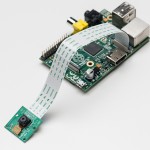Imagine a door bell that will activate a camera when someone presses it.
Imagine a door bell that will notify someone is at your door via SMS or Telegram app.
Physical events can be detected by applying an Analog to Digital Converter (ADC) that will convert voltage signals into readable numbers through Raspberry Pi GPIO pins. Once these numbers reach a certain point, a certain Python function can be invoked. Internet of Thing, in this case a door-bell can also go online by applying a simple networking setup.
The network:
Door bell remote control -> Door Bell chime -> ADC -> Raspberry Pi 3 -> The Internet -> End-user device (e.g. camera, mobile phone, garage door, alarm, or any home electronic appliance you can think of)
The algorithm
- Door bell remote pressed
- Door bell chime rings
- Speaker signals goes up
- Voltages captured by ADC and converted into numbers
- Python program in Raspberry Pi receives a series of numbers
- Python program call a command
- A device receives the notification.
What you need:
- Raspberry Pi 3 (because of its extra processing power and embedded wifi)
- A PC running Linux for programming Python codes remotely
- ADC chip
- Breadboard and GPIO wires
- Door bell with RF remote
- Wifi router, Internet connection
- End device. Try Telegram bot for Python and Telegram app on Android, it’s awesome!
Setting up the hardware and network:
- Hack your door bell. Find a red and black wire going into the speaker. Tap into it, by soldering 2 wires.
- Connect these 2 wires into the ADC chip.
- Wire up ADC chip with GPIO pins.
- Connect your Raspberry Pi 3 into your home network (Lot’s of tutorials for this), make sure you can SSH into it.
- Run the following python 3 code, to ensure we receive a signal from ADC:
To be continued…

